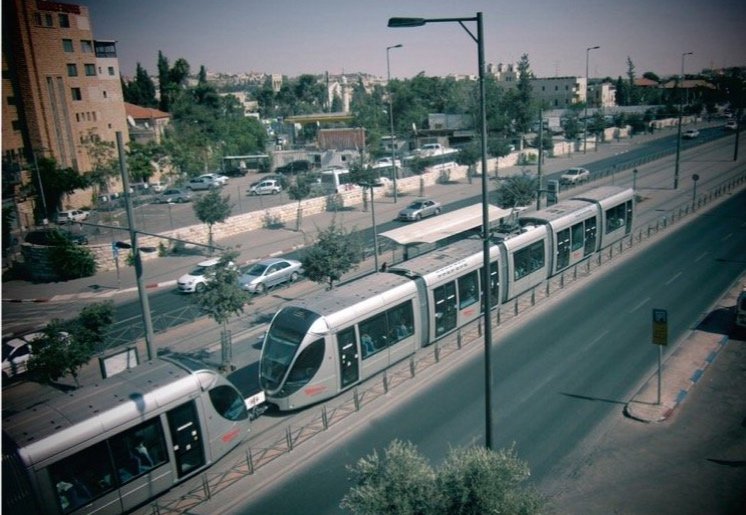
Im/mobility
-
Refugees Cycling
In Berlin, I have been examining a number of projects which seek to encourage refugees’ urban participation by supplying them with bikes, teaching them how to ride or instructing them in bike repair. I am interested here in the connection between the attempts to overcome spatial and social isolation simultaneously, as well as the environmental and gender politics underpinning these projects.

-
Shipping Containers
I am interested in the way global mobility regimes are reflected on the local scale. As part of this, I have studied the role of shipping containers as temporary housing for refugees in Berlin. In this piece published in 2020, I argue that containers - a key infrastructure facilitating the global movement of good - are also involved in the containment, relocation, and displacing of populations on the urban level.

-
Jerusalem's Light Rail
I’ve written quite a bit about the politics of the light rail that opened in Jerusalem in 2012. While it serves some Palestinian neighbourhoods, it also makes these more accessible from nearby settlements, leading to Palestinian residents rejecting it as a colonial infrastructure. See, for instance, The violence of infrastructural connectivity: Jerusalem’s light rail as a means of normalization (2018).

-
East Jerusalem's Bus Companies
Another case study I’ve examined closely it that of East Jerusalem’s bus companies. While they operated autonomously for decades, they are increasingly under Israeli control - leading to logistical and political dilemmas. See my 2019 article Disrupting movements, synchronising schedules: Time as an infrastructure of control in East Jerusalem (open access).
